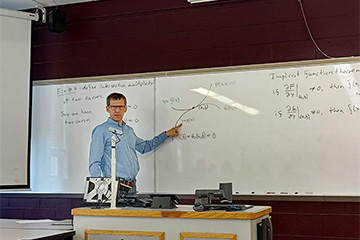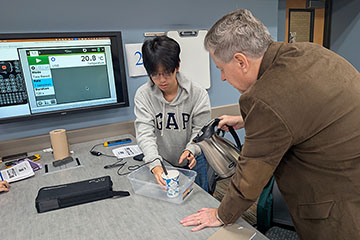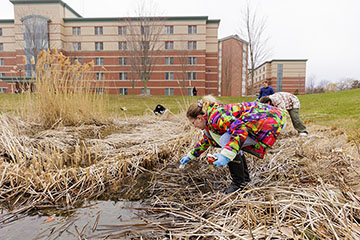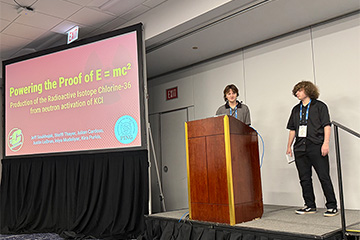From tribal college to CMU: How Jeremiah Little found community and growth in InSciTE
I joined InSciTE last year after transferring to CMU, but my journey to this program really started long before that. I first heard about InSciTE through Dr. Wiline Pangle, who had been my mentor during my time as an REU student at the CMU Biological Station. Back then, I was already passionate about environmental awareness, thanks in large part to my time at the Saginaw Chippewa Tribal College. There, the Land Grant Office did an incredible job connecting Anishinaabe culture, agricultural research, and sustainability, values that shaped how I view science and its impact on the world.
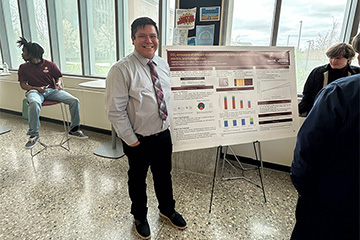
When I transferred to CMU, I knew it would be a very different experience. At a big university, you really have to take the initiative to get involved with groups you care about, or it’s easy to feel lost. That’s what drew me to InSciTE. I saw it as a way to keep learning and practicing research skills that you just don’t get from standard coursework. The fact that it was cohort-based was also a huge selling point for me.
I’ll be honest, I didn’t do well my first time in college, many years ago. What turned things around for me at the tribal college was the sense of community. Small classes, people who knew your name, and a feeling that you were part of something bigger than yourself, that made a huge difference. InSciTE gave me that same feeling. Having a cohort you work with, learn alongside, and complete the entire track with really builds that sense of belonging.
Group work can be intimidating, and I think that’s why a lot of students shy away from it. But in InSciTE, the class activities actually help you open up and get to know one another. Science often focuses so much on technical skills that we overlook how important communication and teamwork are. That’s something I’ve learned firsthand here.
Some of my favorite moments weren’t even the serious research breakthroughs, they were the times my team would meet up for project work and we’d end up laughing and joking around. That kind of bond makes the stressful parts worth it. Working in a team can be challenging, but if you stick with it, you can accomplish so much more than you ever could alone.
Personally, I’ve learned a lot about myself, how to communicate what I need, how to listen to what others need, and how to work through problems together. You just don’t get that kind of experience in regular classes, where you’re mostly working on your own except for the occasional lab.
I’d recommend InSciTE to anyone who wants to push themselves, work on meaningful projects they help design, and grow both as a researcher and as a teammate. It’s not always easy, but the growth you get, both in science and in yourself, is absolutely worth it.
